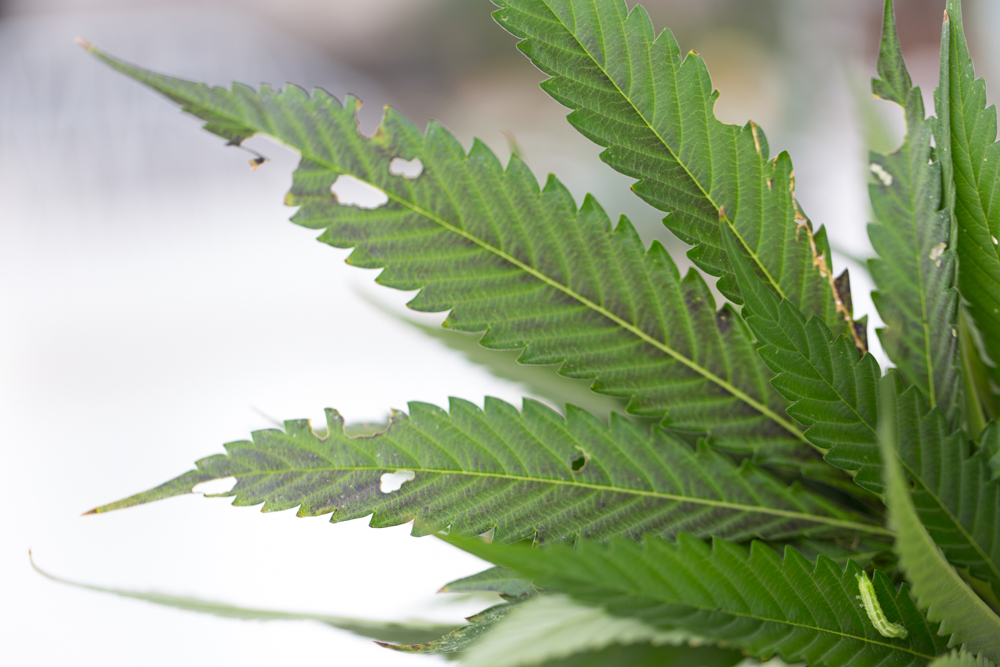A Cannabis Primer: The ABCs of CBD and THC
Both Have Medicinal Benefits, Just One Gets You High

Near the end of my father’s life about two years ago, his sleep and anti-anxiety medications were making him miserable. As a last resort, I tried dosing him with medical marijuana edibles. (He called it “the pot,” which still brings a smile.) Not surprisingly, relief came without all the sickening side effects of the pharmaceuticals. To this day, I can’t believe that medical marijuana wasn’t the first treatment to be prescribed.
We all know Californians voted overwhelmingly to legalize cannabis in 2016. What we don’t seem to know are the differences between CBD and THC. Many of us haven’t even heard of CBD and THC! This helps explain the local government boondoggle in greenlighting what should be a completely legal and safe activity of purchasing cannabis. It also helps explain why medical marijuana wasn’t prescribed as part of my father’s end-of-life care.
I say, let’s start a cannabis education campaign. And let’s start from the beginning and speak in big picture, general terms. THC gets you high; CBD doesn’t. Both of them have medicinal benefits.
Now for some specifics. Cannabis sativa is a plant genus, from which hemp and marijuana are born. CBD (or cannabidiol) and THC (or tetrahydrocannabinol) are in both hemp and marijuana and, as of today, are the most famous “ingredients.” CBD and THC are what’s called cannabinoids, and there are more than 100 of these amazing compounds in cannabis. Cannabinoids aid in repairing and balancing our bodies through our endocannabinoid system. THC is super famous because it is the cannabinoid that gives the high. CBD, THC, and the rest of the cannabinoids are in the flowers, seeds, and stalks of the hemp and marijuana plants. Hemp produces a higher ratio of CBD to THC and marijuana a higher ratio of THC to CBD. That is to say, CBD is prevalent in hemp, while THC is plentiful in marijuana.
“Wait, hold on a minute,” you may be thinking. “If CBD doesn’t get you high, what good is it?”
For starters, CBD has amazing anti-inflammatory properties making it the ideal alternative to many over-the-counter pain medications. Sold in a variety forms such as oil, gels, gum, and supplements, among others, CBD can bring relief from arthritis, backaches, and chemotherapy symptoms. Also, it helps with nausea, migraines, depression, and anxiety. It should be noted that in June, the FDA, as in the federal Food & Drug Administration, approved CBD oil as a therapy for epileptic seizures. Epidiolex has the bragging rights as the first CBD prescription medicine.
THC provides some of the same medical benefits as CBD, in addition to helping with conditions like glaucoma and low appetite. And, remember, THC is the one that gives the high.
You can buy CBD products at health-food stores; I can buy them at mine in Carpinteria. There are oils and creams and tinctures, and a fairly knowledgeable staff.
With the available amount of research on the cannabis plant, it’s easy to be overwhelmed by the similarities and differences between the two, CBD and THC. To keep it simple, how about using this mnemonic device — THC has an H, which equals high. CBD has a B, which equals body, as in good for the body.
Let’s keep the learning process going, as an education is never wasted. In future columns my partners and I will discuss the do’s and don’ts of dosing, sativa and indica hybrids, cannabis confusion, cultivation on local farms, and that the cleanest green is in Santa Barbara County. If you have any cannabis-related questions, please email us at info@kopsun.com.
Author Tina Fanucchi-Frontado and partners Leigh-Anne Anderson and Amy Marie Orozco have formed KopSun to provide education and information to support and safely explore the new cannabis culture. To learn more, visit KopSun.com.


